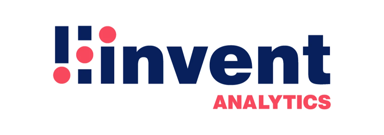Job Enrichment
Job enrichment is an approach that organizations use to make jobs more meaningful by adding depth to employees' roles. It makes work more impactful by increasing responsibility, autonomy, and purpose instead of just giving more tasks. 📌
Job enrichment redesigns jobs to give people more responsibility, recognition, and opportunities to grow. It makes work more fulfilling by tapping into what actually motivates employees.
When done right, job enrichment turns regular tasks into roles that challenge employees and give them a real sense of purpose. It gives people more control over their work, offers feedback, and helps them see how their work ties into the bigger picture.
For example, a customer service rep might be given the authority to resolve tricky issues on their own, help improve service processes, and track how their work impacts customer satisfaction.
Benefits of Job Enrichment
Working at a job that challenges and satisfies you is transformative for both employees and the company. People bring their full energy and creativity to the table when they connect with meaningful work.
Think about your best performers. They stay because their work matters to them. Give someone a role where they can make real decisions and see their impact, and you have someone who's invested for a long time.
Autonomy is powerful. When professionals own their work process, they're driven by something deeper than just checking boxes. They want to succeed because they personally care about the outcome.
There's also something contagious about an environment where people feel empowered. Ideas flow more freely. People speak up with improvements rather than just executing tasks. The culture shifts from maintenance to innovation.
As team members move into enriched roles, they naturally develop capabilities that are good for both their career growth and organizational needs.
Companies known for meaningful work attract stronger talent and create a cycle that builds competitive advantage over time.
Job Enrichment vs. Job Enlargement
Job enrichment and job enlargement are just two different ways to rethink how jobs are set up. 📌
Job enlargement operates on a horizontal dimension. It expands the scope of work by increasing the number or variety of tasks at the same level of responsibility. Essentially, it makes jobs "wider" without necessarily making them "deeper." While this approach can reduce monotony, it may simply replace one form of repetition with another if not thoughtfully implemented.
For example, a data entry clerk might experience job enlargement by being assigned responsibility for multiple data systems rather than just one. The nature of the work remains similar, but with greater variety.
Job enrichment isn’t just about giving people more tasks. It’s about making their work more meaningful by giving them more control, variety, and responsibility.
In practical terms, job enrichment might transform that same data entry position by granting authority to identify and correct data inconsistencies, participate in database design improvements, and communicate findings directly to departmental stakeholders.
The outcomes of these approaches differ significantly. Job enlargement may temporarily alleviate boredom but often fails to address deeper motivational needs. Job enrichment directly targets these intrinsic motivators, producing more sustainable engagement and satisfaction.
To illustrate this contrast: An accounting assistant experiencing job enlargement might take on accounts payable in addition to accounts receivable, more work but similar complexity. With job enrichment, that same assistant might gain responsibility for analyzing payment patterns, recommending process improvements, and presenting findings to leadership: same amount of work but with greater depth and impact.
For HR professionals, recognizing when each approach is appropriate represents a critical skill. Job enlargement may serve as a stepping stone toward enrichment or as a solution for temporary work distribution. However, for lasting engagement and development, job enrichment offers the more powerful intervention.
HR Tips for Implementing Job Enrichment
Here are some tips to bring job enrichment to your organization. 👇
Begin with thorough job analysis to identify enrichment opportunities. Examine current positions to pinpoint where meaningful additions could enhance job quality. Look for tasks that could be elevated with more autonomy, variety, or significance. The most successful enrichment initiatives are built on deep understanding of existing role structures and limitations.
Employee involvement proves essential throughout the enrichment process. Conduct interviews or surveys to understand what would make work more meaningful to your people. Inviting participation not only generates better enrichment ideas but also increases buy-in for eventual changes. Remember that perceptions of enrichment are somewhat subjective, what motivates one employee might not inspire another.
Start with pilot programs rather than organization-wide implementations. Select a department or team where leadership supports the concept and where success metrics can be clearly established. These controlled trials provide valuable learning opportunities before broader rollout.
Training and development must accompany enrichment initiatives. As employees take on more complex responsibilities, ensure they receive the necessary skill development to succeed. This support demonstrates organizational commitment to the enrichment process and prevents frustration from skill-capability mismatches.
Leadership alignment represents another critical success factor. Managers accustomed to traditional control structures may struggle with the increased employee autonomy that accompanies job enrichment. Prepare leaders through education about enrichment benefits and coaching on supportive management approaches.
Establish clear success metrics to evaluate enrichment effectiveness. These might include engagement scores, retention rates, productivity measures, or quality improvements. Regular assessment against these metrics enables continuous refinement of your enrichment approach.
Job enrichment isn’t just one thing, it’s about mixing things up. You need variety in skills, a sense of purpose in the work, the freedom to make decisions, and regular feedback. The most successful programs include a bit of all these things, rather than focusing on just one.
And remember, enrichment isn’t something you do once and forget about. It should keep evolving. Make it a point to regularly reassess and adjust as things change, both in the company and for your employees.
Challenges & Solutions in Job Enrichment
Despite its considerable benefits, implementing job enrichment comes with several challenges that require thoughtful navigation. 📌
Resistance to Change
Perhaps the most common challenge is resistance to new ways of working. When employees are used to their usual way of doing things, they might see enrichment as more of a disruption than a chance to improve. This can show up as complaints, resistance, or just not fully getting on board.
You need to communicate openly about how enrichment will benefit both the company and the employees. Give people a chance to speak up and get involved in how things are shaped.
Look for a few people who are genuinely excited about the change and let them lead the way. And instead of making everything change overnight, introduce things step-by-step, so people can adjust at their own pace.
Overloading Employees
One real risk with job enrichment is giving employees more responsibilities but not cutting back on the less important tasks. Instead of making the job better, it can just add stress and lead to burnout, rather than making people more engaged.
The solution lies in careful workload balancing. For every meaningful responsibility added, consider what existing task might be eliminated, automated, or reassigned. Monitor workload perceptions through regular check-ins during the enrichment process.
Create clear parameters around new responsibilities, including reasonable timeline expectations and prioritization guidance. Remember that true enrichment should enhance job quality without necessarily increasing total work volume.
Measuring Impact
Demonstrating ROI presents another common challenge. Without clear metrics, enrichment initiatives may lose support when budgets tighten or leadership changes. The subjective nature of "meaningful work" can make quantification difficult.
Develop multi-dimensional measurement approaches that capture both quantitative and qualitative outcomes. Establish baseline measures before implementation to enable valid comparisons.
Make sure to weave enrichment goals into your regular performance check-ins so they don’t slip through the cracks. You can track things like how engaged people are, their performance, retention, and growth in skills using something simple, like a balanced scorecard.
Maintaining Consistency
Ensuring equitable enrichment opportunities across different departments or job categories can prove challenging. When some roles receive significant enrichment while others remain unchanged, perceptions of organizational favoritism may emerge.
Create organization-wide enrichment frameworks that can be adapted to various job functions while maintaining consistent principles. Communicate transparently about why certain roles receive particular enrichment approaches.
Develop phased implementation plans that eventually include all appropriate positions. Importantly, recognize that while the form of enrichment may differ between roles, the opportunity for meaningful work should be universally available.
Sustaining Momentum
Many organizations implement enrichment initiatives with initial enthusiasm only to see efforts fade as attention shifts to newer priorities. This inconsistency undermines the potential long-term benefits of job enrichment.
Build enrichment principles into organizational values and management evaluation criteria to ensure sustained focus. Set up a way to keep track of progress and make sure everyone’s on the same page.
Share the wins and results often, so everyone sees why it's worth sticking with. And make it part of everyday things like writing job descriptions, doing performance reviews, and planning for future leaders so it just feels like a natural part of the flow.
Conclusion
Job enrichment represents a powerful strategy for creating meaningful work experiences that benefit both employees and organizations. By focusing on depth rather than just breadth, enrichment initiatives tap into intrinsic motivation factors that drive sustainable engagement and performance. 🌟
Get a demo
- Quickly find top candidates with smart application management
- Improve team collaboration using built-in communication and workflows
- Offer a smooth candidate experience to strengthen your employer brand
- Count on 24/7 support for a hassle-free hiring process
- Quickly find top candidates with smart application management
- Improve team collaboration using built-in communication and workflows
- Offer a smooth candidate experience to strengthen your employer brand
- Count on 24/7 support for a hassle-free hiring process
"Hirex saved us from hundreds of excel sheets, our hiring process is much easier now."

Trusted by 100+ teams
Get Informed,F.A.Q.
Revolutionize your hiring process with our transformative Applicant Tracking System (ATS.)
Suggested keywords
What is Cultural Fit?
Let's talk numbers - 89% of employers put cultural fit at the top of their hiring checklist. Pretty huge. But wait a second... what exactly does cultural fit mean in today's fast-moving workplace?The ...
Employee NPS Benchmarks
An Employee NPS benchmark is basically a way to see how your company’s employee satisfaction stacks up against others. It helps turn your eNPS score into something useful by giving it context. 📌You'r...
Salary Benchmarking
Salary benchmarking is basically figuring out if what you're paying your team makes sense compared to what others are offering for similar roles. It’s like checking the going rate before you buy somet...















